
 |
Eager Space | Videos by Alpha | Videos by Date | All Video Text | Support | Community | About |
|---|

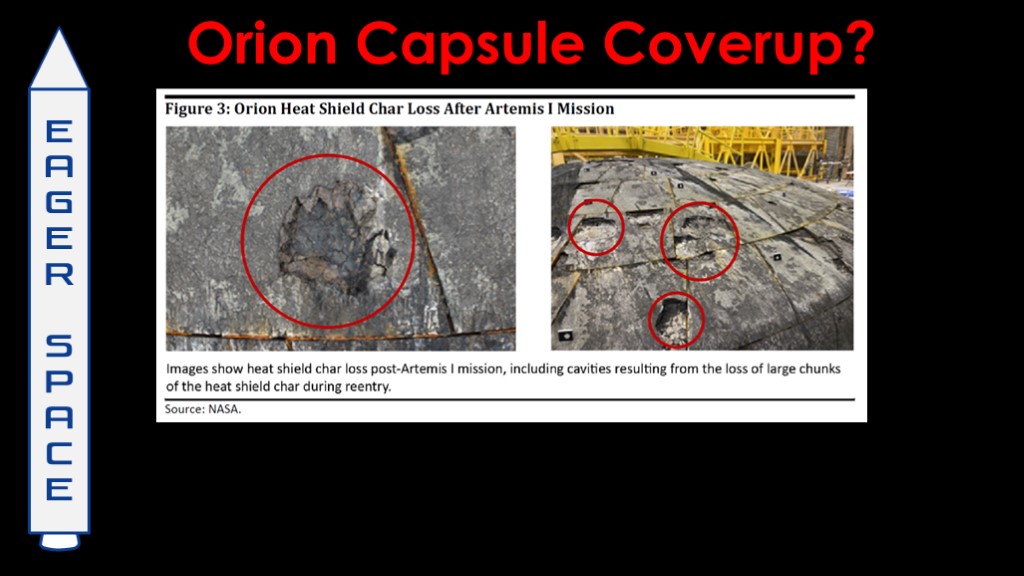
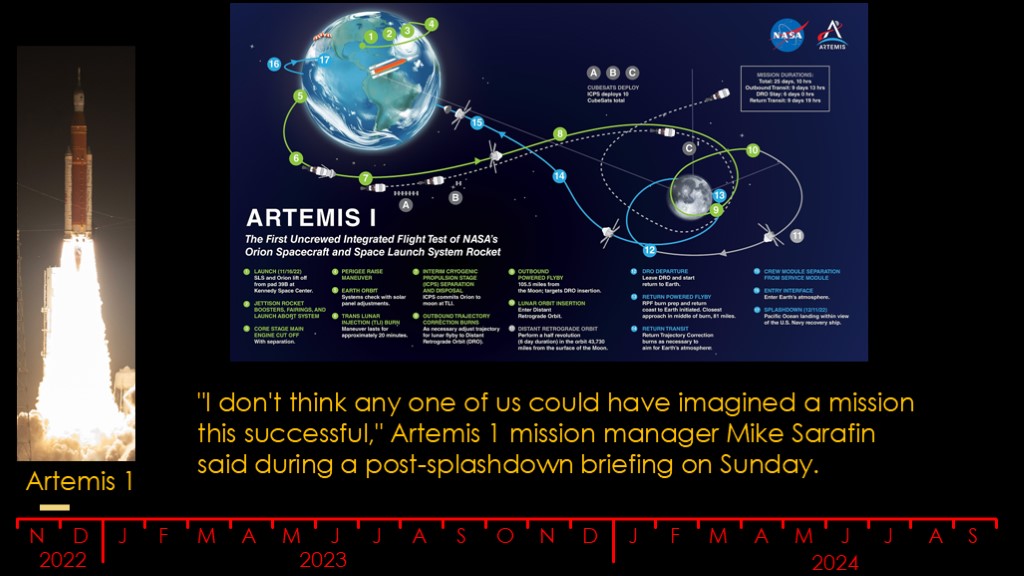
On November 16th 2022, SLS and Orion finally took flight on the first flight in NASA's Artemis moon mission. It was a long mission, running 25 days and landing on December 11th.
NASA management was very pleased.
*read quote*
NASA immediately started their post-flight review process.
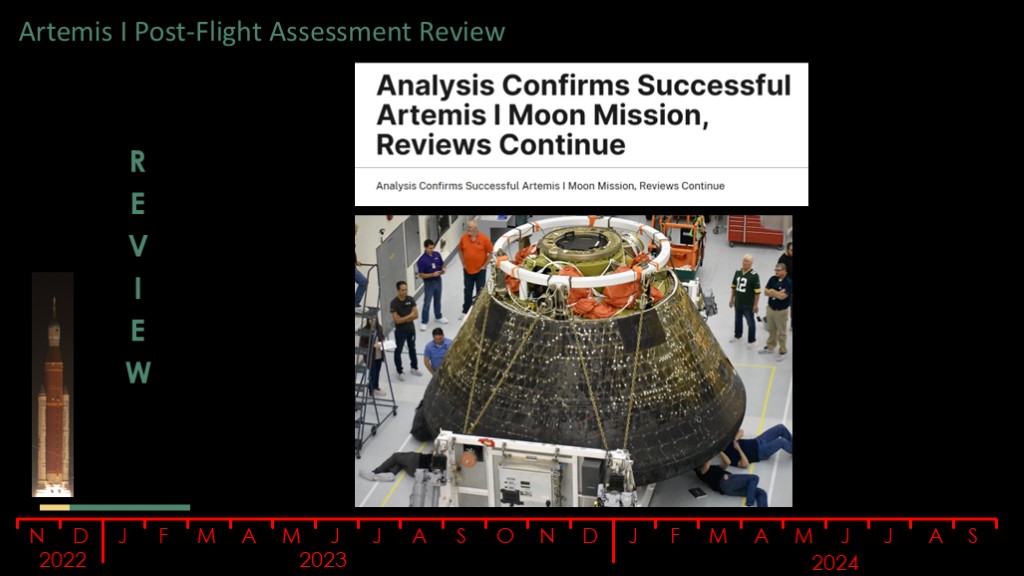
NASA would spend roughly 3 months reviewing the data, as part of the Artemis 1 post-flight assessment review.
On March 7th of 2023, they held a press conference where they declared the mission a success but noted there were still reviews underway.
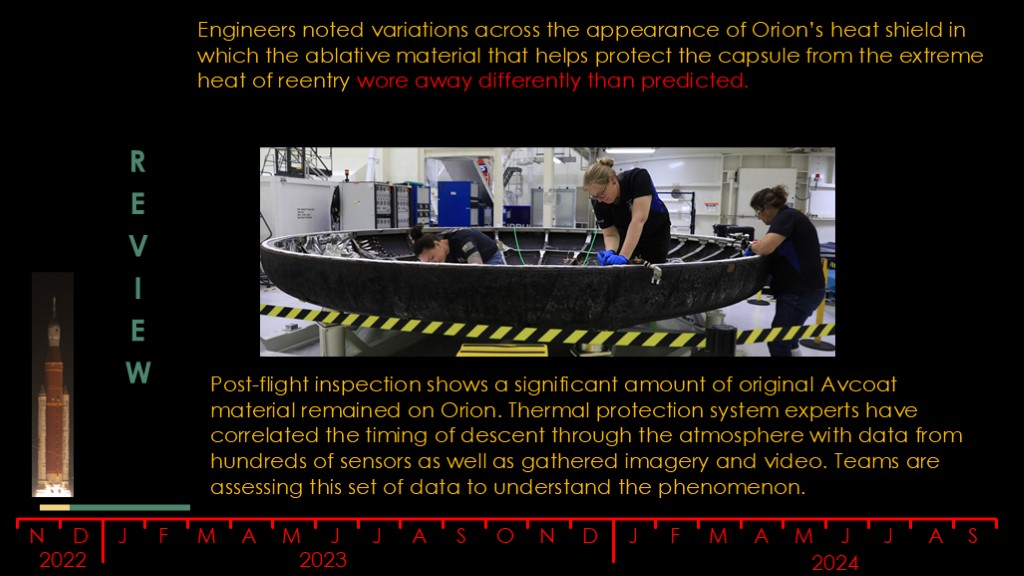
The press release described some of the issues that were still being worked on, but did not release the details of the post flight assessment review.
NASA released this picture of the flown Orion capsule heat shield, and provided the following status:
(read)
(read)
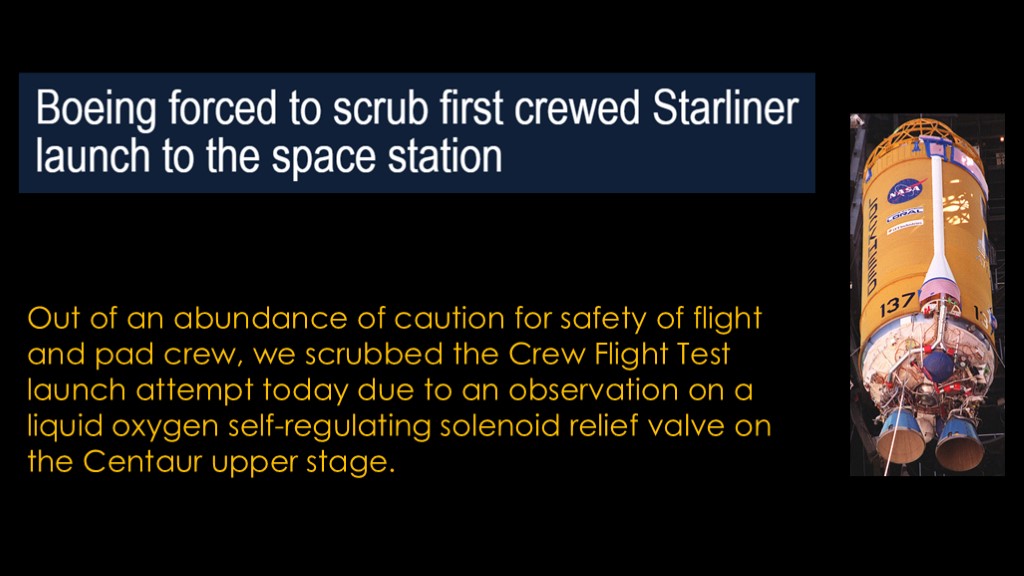
This sort of thing happens all the time, especially on test flights, and it's not much of a story. On May 6th, 2024, ULA scrubbed the first crewed launch of Boeing's starliner capsule because of a misbehaving valve on the centaur upper stage.
(read)
"Out of an abundance of caution..." is a fairly standard phrasing for "it's probably okay, but we're going to do something anyway..."
The NASA information about the heat shield had the same tone.
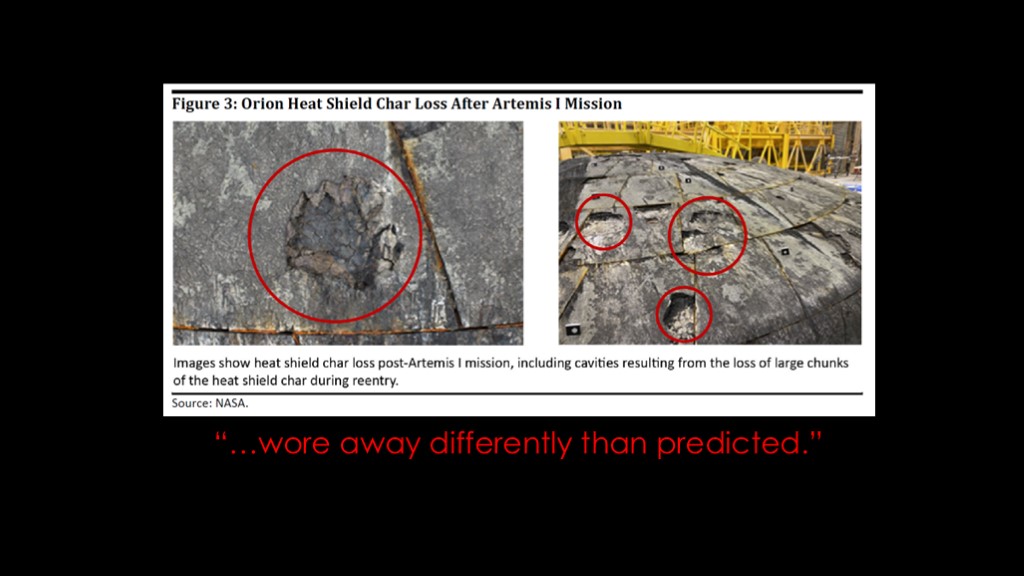
What we didn't know at the time is that there were pictures of the bottom of the heat shield. I don't think anybody had this sort of damage in mind when they read the NASA phrase "... wore away differently than predicted".
What has happened is that NASA management decided to do their best to minimize the issue with the heat shield and not release these photos.
Which was their first mistake, and honestly it's a pretty stupid move...
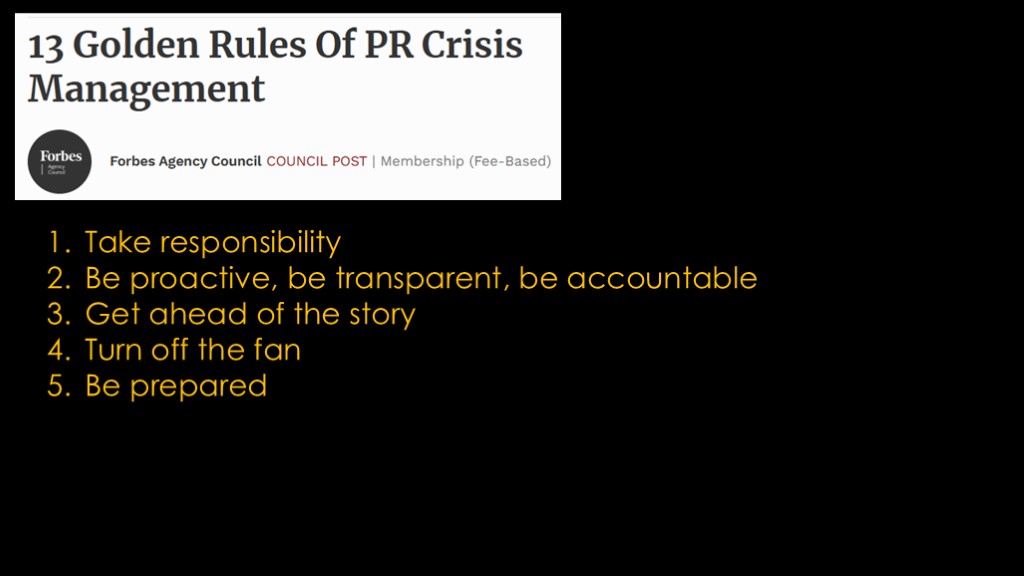
Many organizations will at some point need to deal with a situation that involves negative PR, and there are many guides and PR professionals who would be happy to help.
Here's a guide from Forbes. I've picked out 5 of their 13 rules...
Take responsibility. Do not try to cover up the PR crisis, it will only worsen the damage.
Be proactive, be transparent, be accountable.
Get ahead of the story. You want information to be coming from you rather than from other sources.
Turn off the fan. Don't fuel the fire.
Be prepared. Anticipate potential scenarios and establish internal protocols for handling them.
This is how you keep a bad situation from getting worse. Before we get to the "getting worse" part, we need to talk about heat shields...
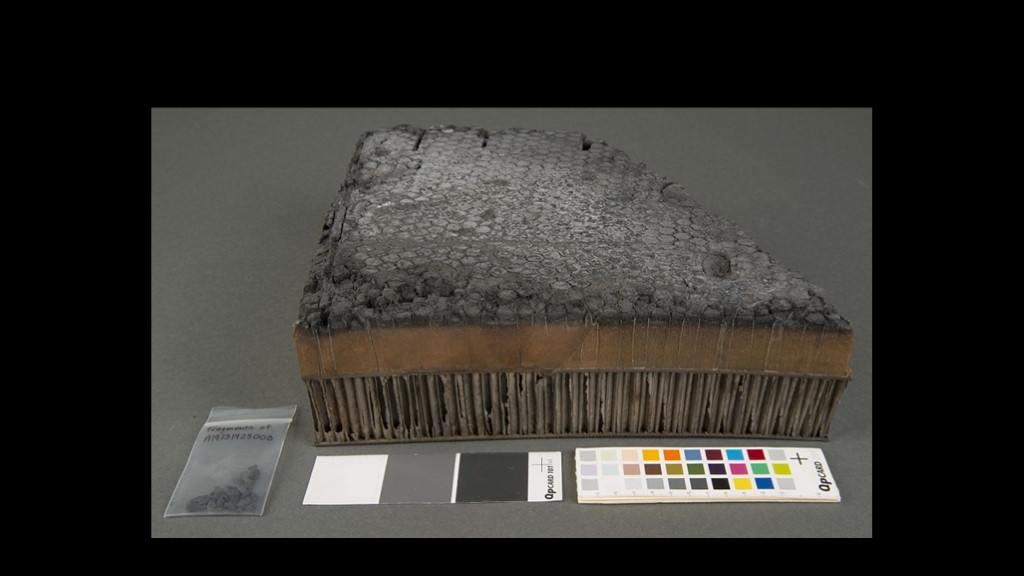
The heat shields for Apollo were made of a fiberglass hexagonal structure that was filled with resin. This is a fragment of the heat shield that was flown on the Apollo AS-202 uncrewed test flight in 1968. You can see the cell structure quite clearly.
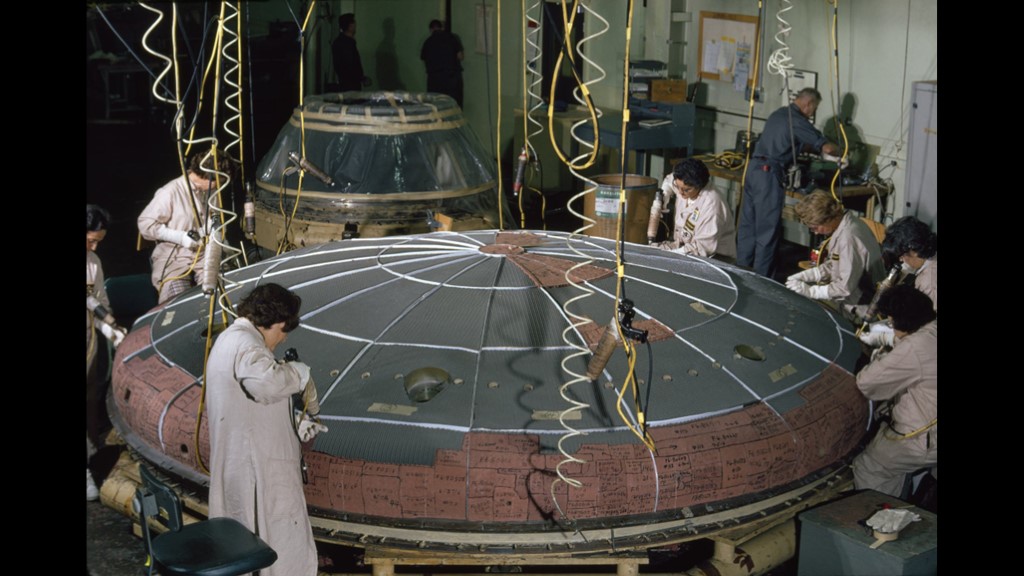
The downside of the apollo approach is that it is very labor intensive; every cell in the heat shield is filled by hand.
The material they use is known as avcoat.
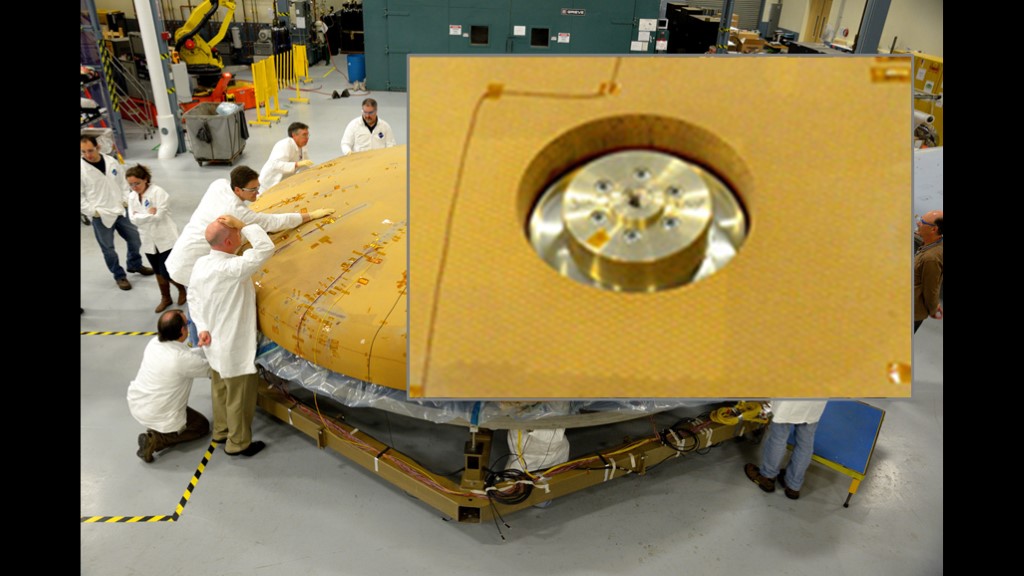
For Orion, Lockheed Martin used the same approach. This is the heat shield that flew on the Orion EFT-1 test flight on top of a Delta IV Heavy in 2014.
If we look at a close up, we see the same hexagonal structure used for Apollo.
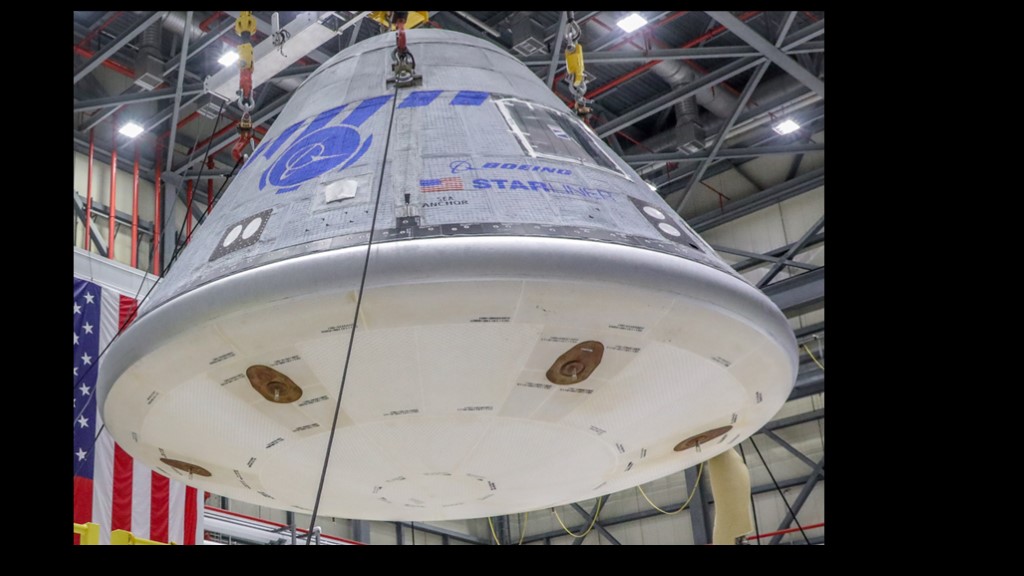
Boeing's starliner also uses the honeycomb cell structure filled with ablator material.
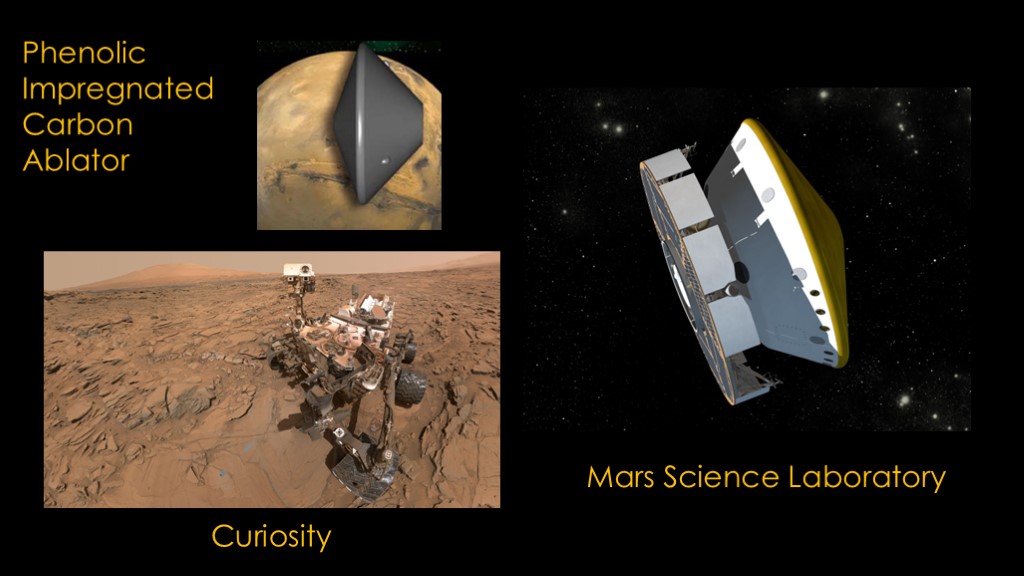
In the 1980s, NASA invented a new heat shield material known as the Phenolic impregnated carbon ablator - or PICA (pee cah) - for use on planetary missions, and it performed well on the Mars Science Laboratory mission in 2012 which delivered the Curiosity rover to the surface.
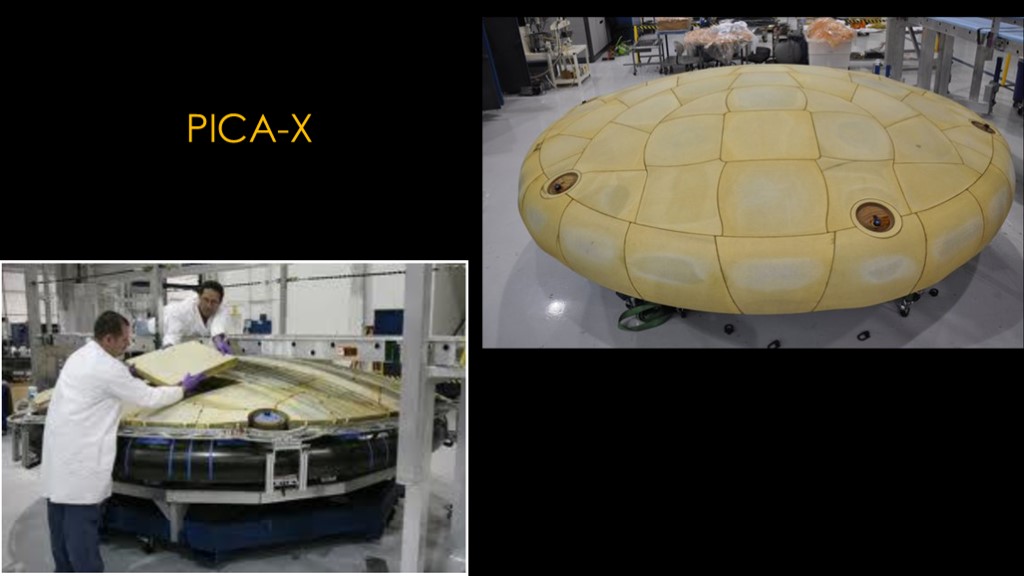
That led to a collaboration between SpaceX and NASA to create a new material known as PICA-X which is used on the Crew Dragon. That material is created in tiles that are then applied to the base of the capsule.
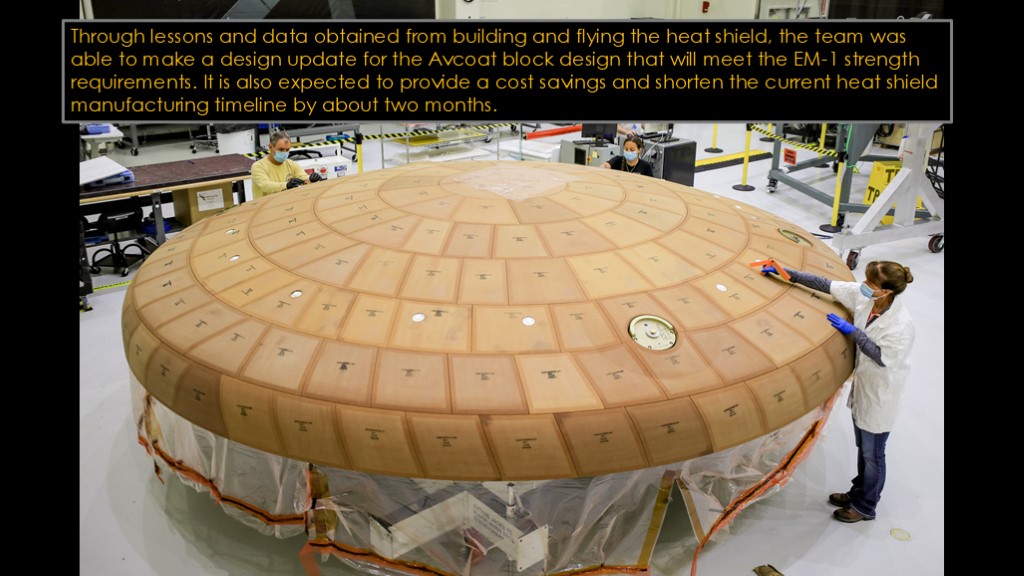
After the EFT-1 test flight, NASA and Lockheed Martin decided to go with a different heat shield for Orion. Instead of the hexagonal cell structure that had been used on EFT-1 and Apollo, this approach uses blocks of AVCOAT.
NASA said this about the change.
(read)
The important thing to note is that Artemis 1 flew with a brand new heat shield design that has never been flown before with a material - AVCOAT blocks - that also had not been flown before.
This is very much a non-NASA thing to do - SLS and Orion have leaned on old technology as much as possible because Artemis 1 is the only uncrewed test flight and therefore things need to work the first time.

In the picture at the right, it appears that most of the erosion issues are next to joints between blocks, but the left pictures shows there can be issues inside the blocks.
Now that we understand the heat shields a bit better, we can return to our story...
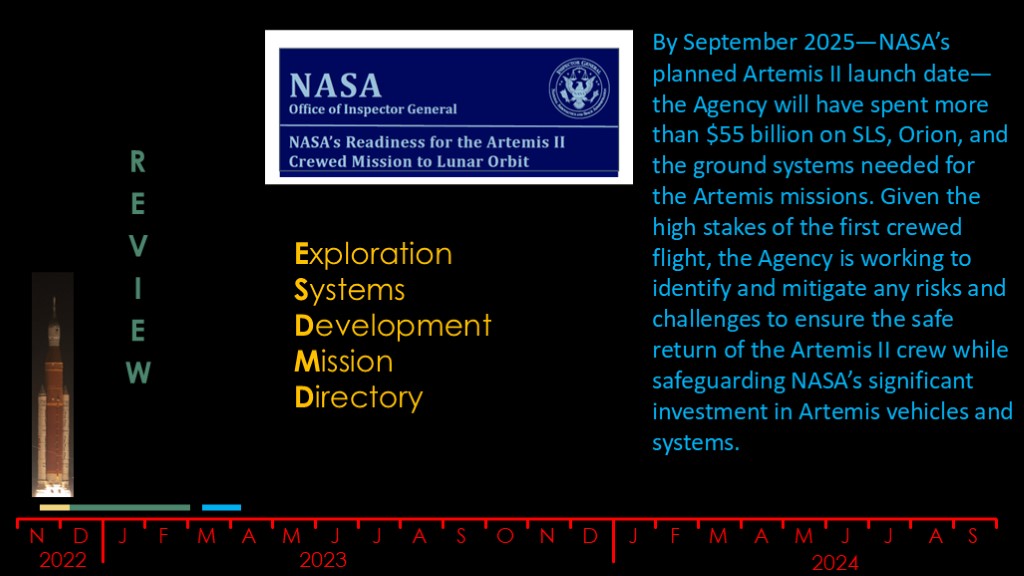
Soon after the review of Artemis 1, the NASA office of the inspector general started an audit to review NASA's readiness for the Artemis II crewed mission to lunar orbit. The provided the following justification for why such an audit was important.
(read)
These audits are part of NASA's normal procedure; this is one of 14 audits conducted on different facets of the Artemis program since 2020 so it's something that NASA organizations will expect.
The weird part here is that the Artemis folks - the Exploration Systems Development mission directorate, or ESDMD - did not provide the auditors with the materials from the post-flight assessment review that was completed in February.
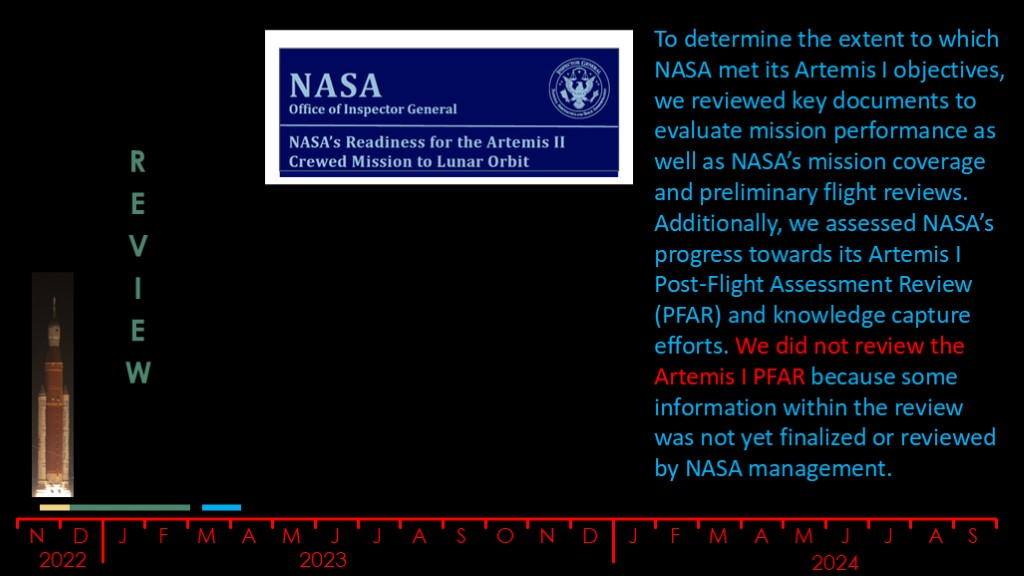
In the OIG report, they say that they did not review the actual post flight assessment review because some information was not finalized or reviewed by NASA management.
It's pretty clear they asked for it and were told no. Which is the second stupid move by management.
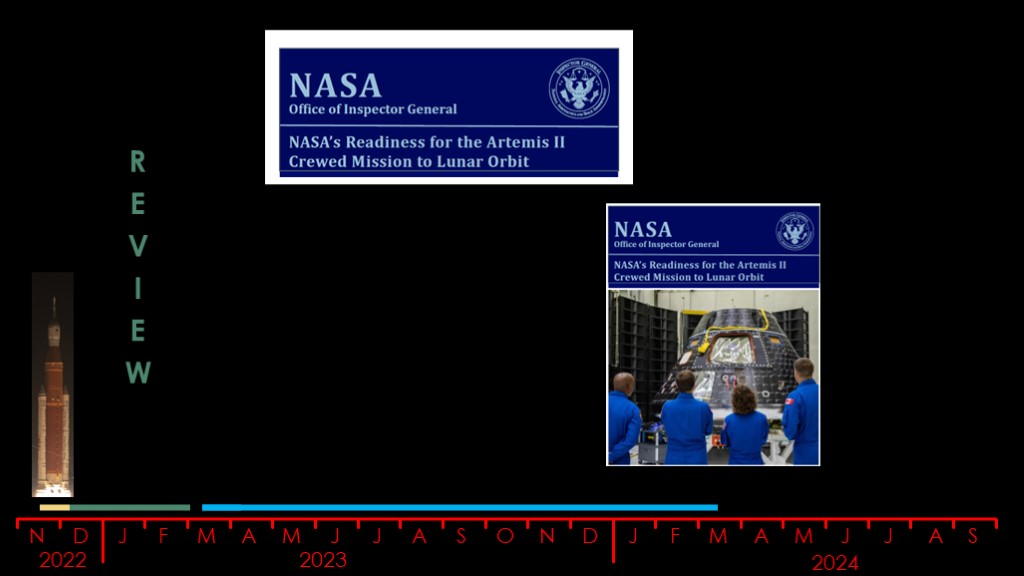
For the next year, OIG works on their review in the absence of the review information, and, apparently, without status updates on issues from the Artemis folks.
Eventually, they finish their audit and write their report.
At that point, it is customary to send the report to the audited organization for comments on the conclusions and recommendations of the audit. Their official response will be added to the report as an appendix.
At this point, ESDMD management realizes that the a) they don't have a solution for the heat shield issue yet and b) there will probably be a reaction to the heat shield pictures, so they wisely decide to get out in front of the report and release the information themselves so they can control the narrative.
Just kidding - management has never read the Forbes article and is apparently ignoring what their PR people are advising.
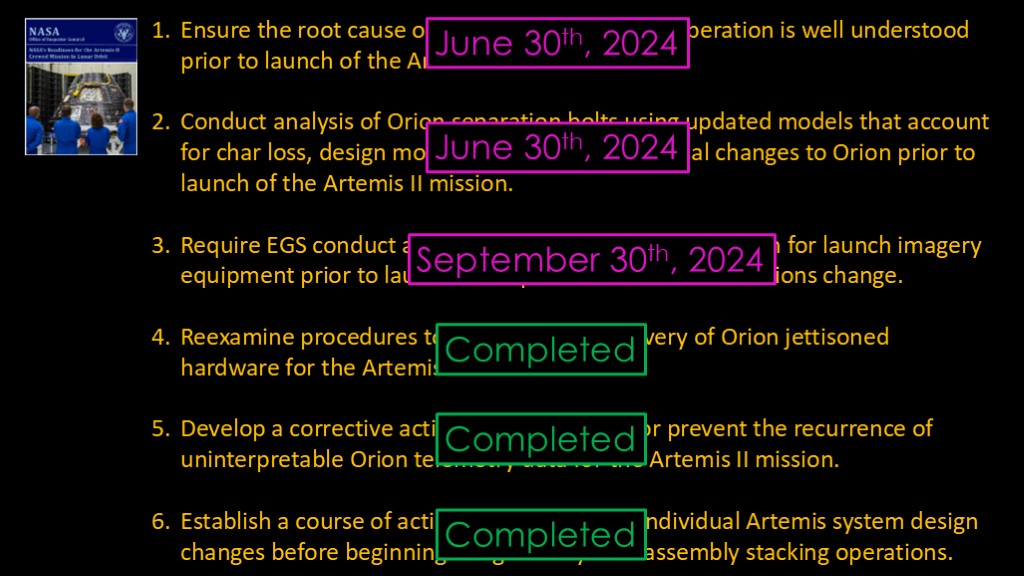
There are 6 recommendations in the report.
(read)
ESDMD provides status on all 6 of them in their response. Three have been completed.
Two heat shield issues are still active with an expected completion data of June 30th, and there is a launch imagery issue that is expected to be completed on September 30th.
The imagery one is a bit perplexing. There were some issues with misalignment of cameras and camera fogginess, but most of the issues came because the camera exposures was not adjusted for the night launch. It is 15 months since Artemis 1 flew but it is going to take another 6 months to figure out how to set up the cameras properly.
ESDMD concurs with all the recommendations, which means they agree they are the right things to do going forward.
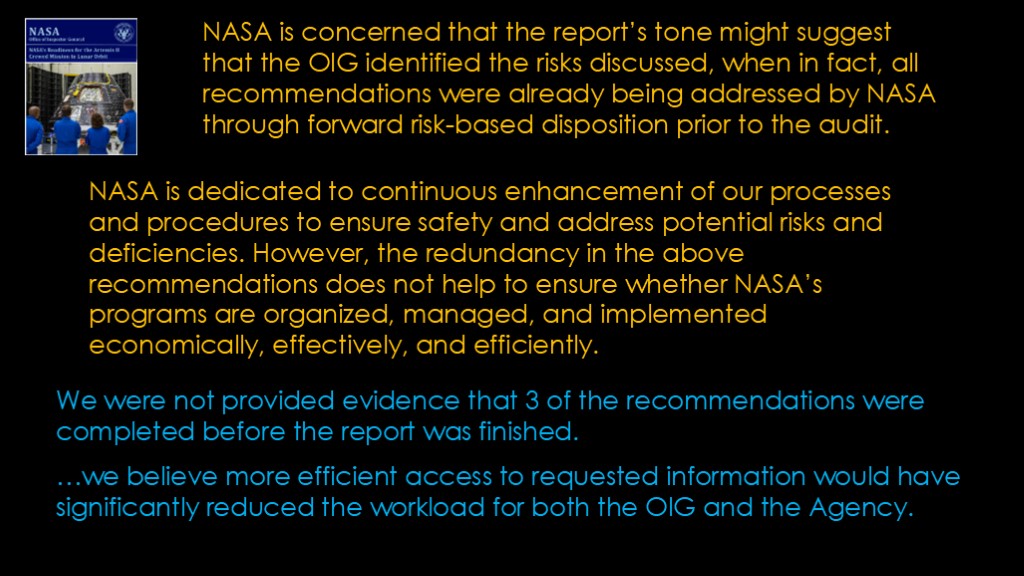
Then they decide to turn up the fan.
In the beginning of their response, they write the following:
(read)
Maybe if ESDMD was more forthcoming when working with OIG, they would have known the details of what was being worked on rather than having to discover it on their own.
Then they add
(read)
ESDMD has apparently forgotten that OIG gets the last word:
(read)
(read)
ESDMD apparently made little effort to keep OIG auditors in the loop with the original flight review content or updates along the way, and complaining about situation that they are responsible for looks like whining.
It's amusing that ESDMD has no inkling of what is going to happen when the report is released; their biggest concern is that the report talks about things that are already fixed and that, for some reason, somebody might think that OIG is in charge of technical solutions in ESDMD.
Apparently nobody who mattered was paying attention enough to notice that disturbing heat shield picture or note that their hope that they would have a solution before it was disclosed did not pan out.
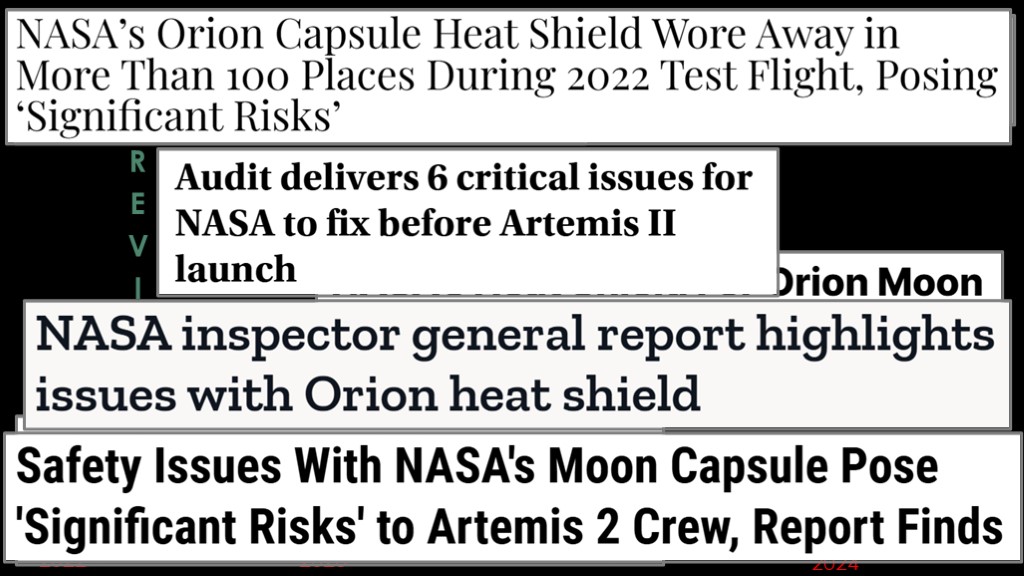
May 1st and the report is released. The response is what is expected and not at all what NASA wants. The OIG report is driving the story, and ESDMD's goal of shifting blame onto OIG is ignored, which is good, as it makes them look not only non-transparent, but petty.
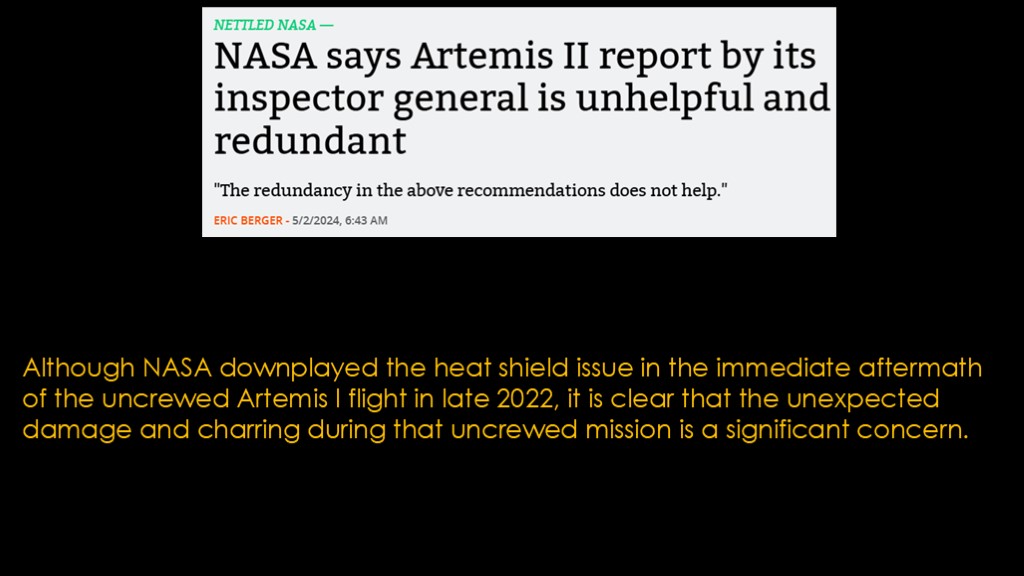
However, veteran space reporter Eric Berger writes a more insightful story, commenting on ESDMD's response to the report.
Berger notes that (read). This is spot on, except that he uses "downplayed" rather than the phrase I would use, which is "covered up"...
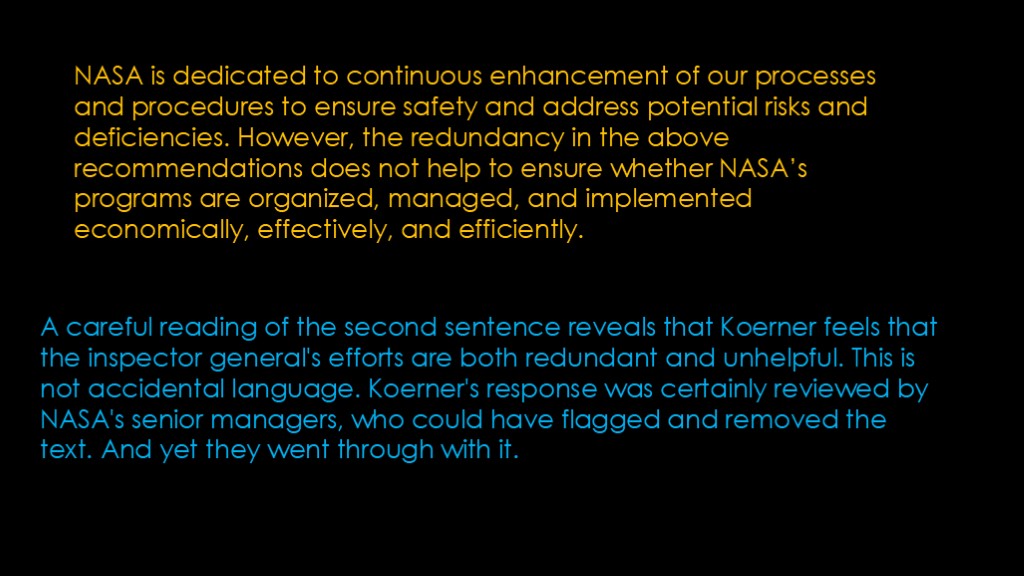
He discusses the final comment by Catherine Koerner, the associate administrator for ESDMD.
Berger comments (read)
I agree fully with Berger's analysis, and I would go farther and say that this demonstrates that NASA management is more concerned about appearance and politics between internal groups than with their actual mission.
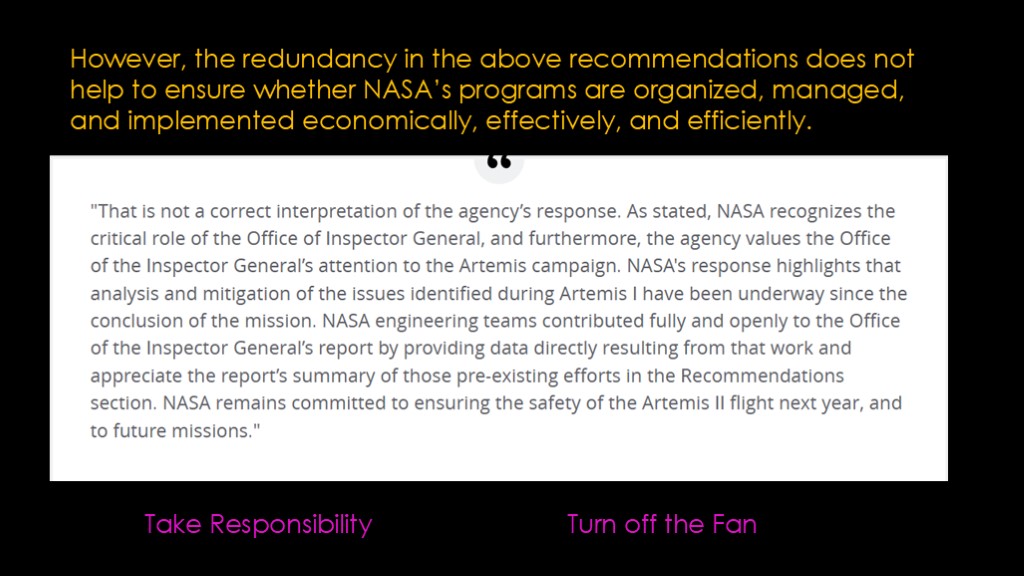
Was that the right interpretation of the quote?
Berger asked for a response from NASA, and they provided this. (read)
First, this response says that the interpretation is wrong without explaining what the sentence actually meant. It's a non-response, and the items they mention are a) already covered and b) pretty clearly their own fault.
Second, it's pretty clear that a group that is not transparent with their internal auditors is even worse with the public.
Third, telling the press that they are wrong is a stupid thing to do even if they are wrong. All you are doing is further damaging the relationship.
Take responsibility, and turn off the fan....
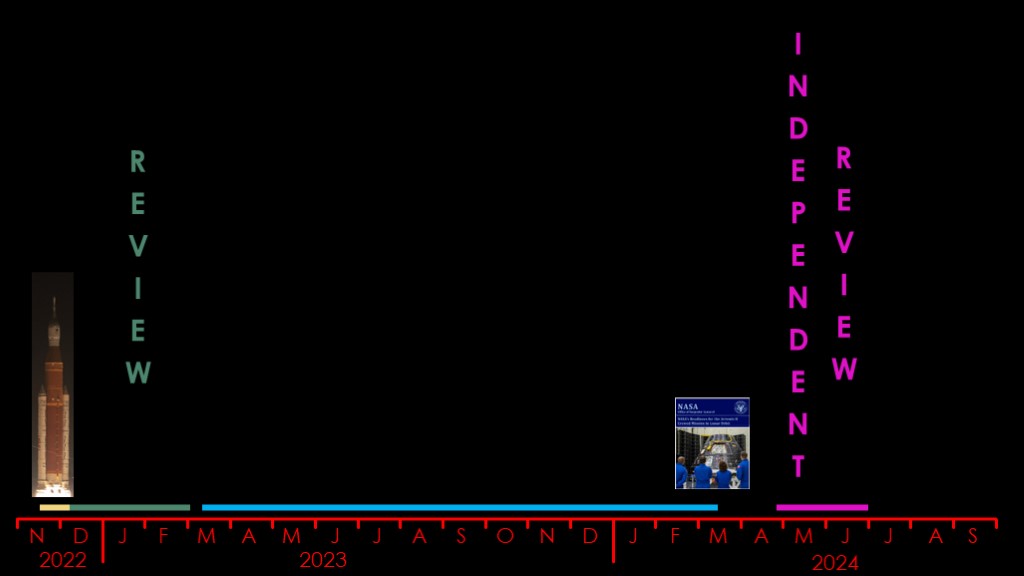
Roughly a week after the release of the OIG report, we learned that NASA had commissioned an independent review team in late April to have "another set of eyes" and plan to either be done at the end of June or this summer, depending on who you talk to.
NASA has not revealed who is on the independent review team and what their exact charter is.
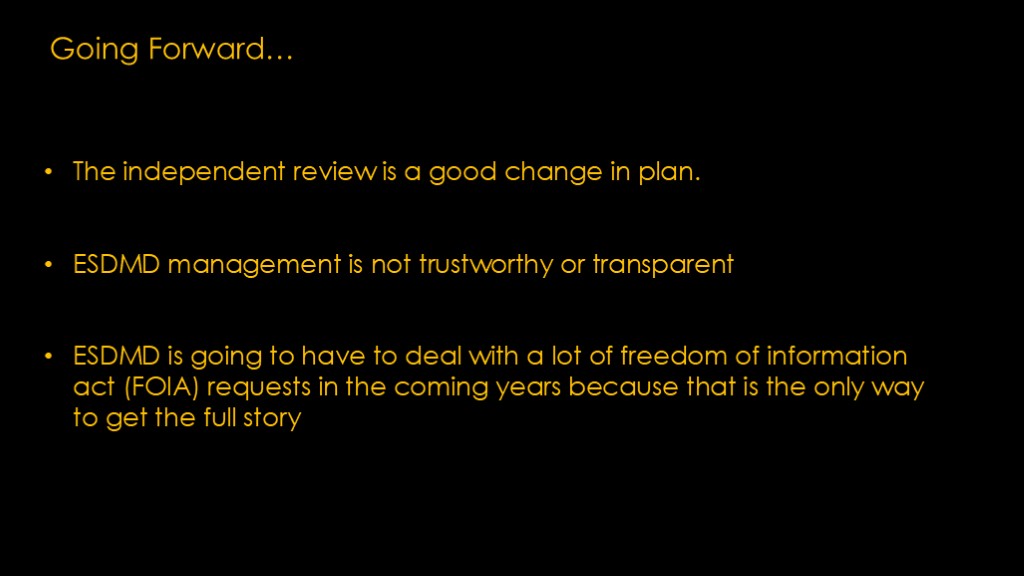
And that's the current state with the Orion Heat Shield.
A few parting thoughts.
The independent review is a good change in plan since a year of analysis did not resolve the problem, but it's not clear what "independent" means in this context or who the reviewers are. Finishing by the end of June seems unlikely since that was the target date before the independent review was spun up.
ESDMD management is not trustworthy or transparent. They can't even work well with their auditors, much less provide information to the public as they are required to by the Space Act of 1958. Given that,
ESDMD is going to have to deal with a lot of freedom of information act - or FOIA - requests in the coming years because that is the only way to get the full story.
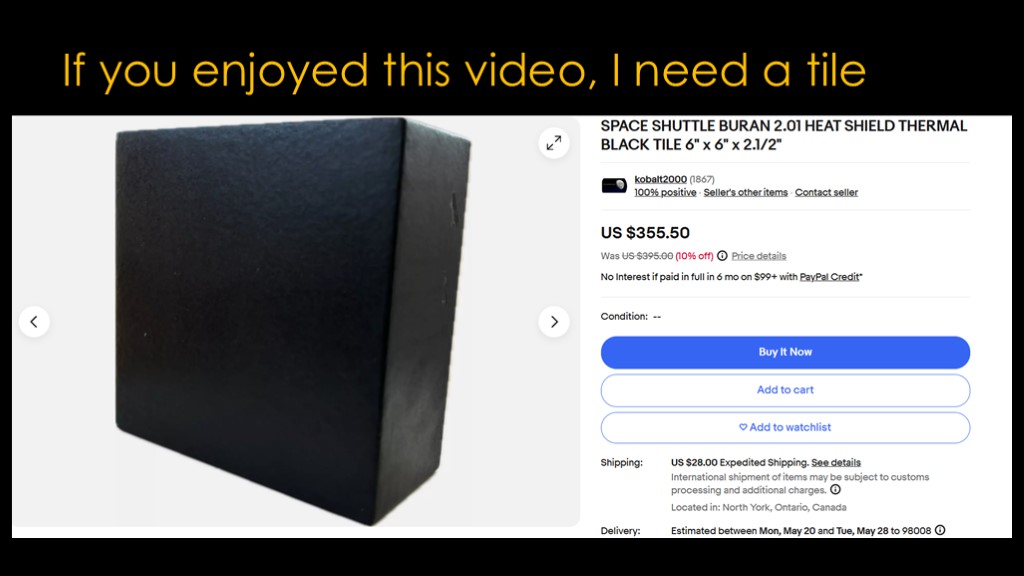
If you enjoyed this video, please send me this tile that supposedly had something to do with the Soviet Buran space shuttle.